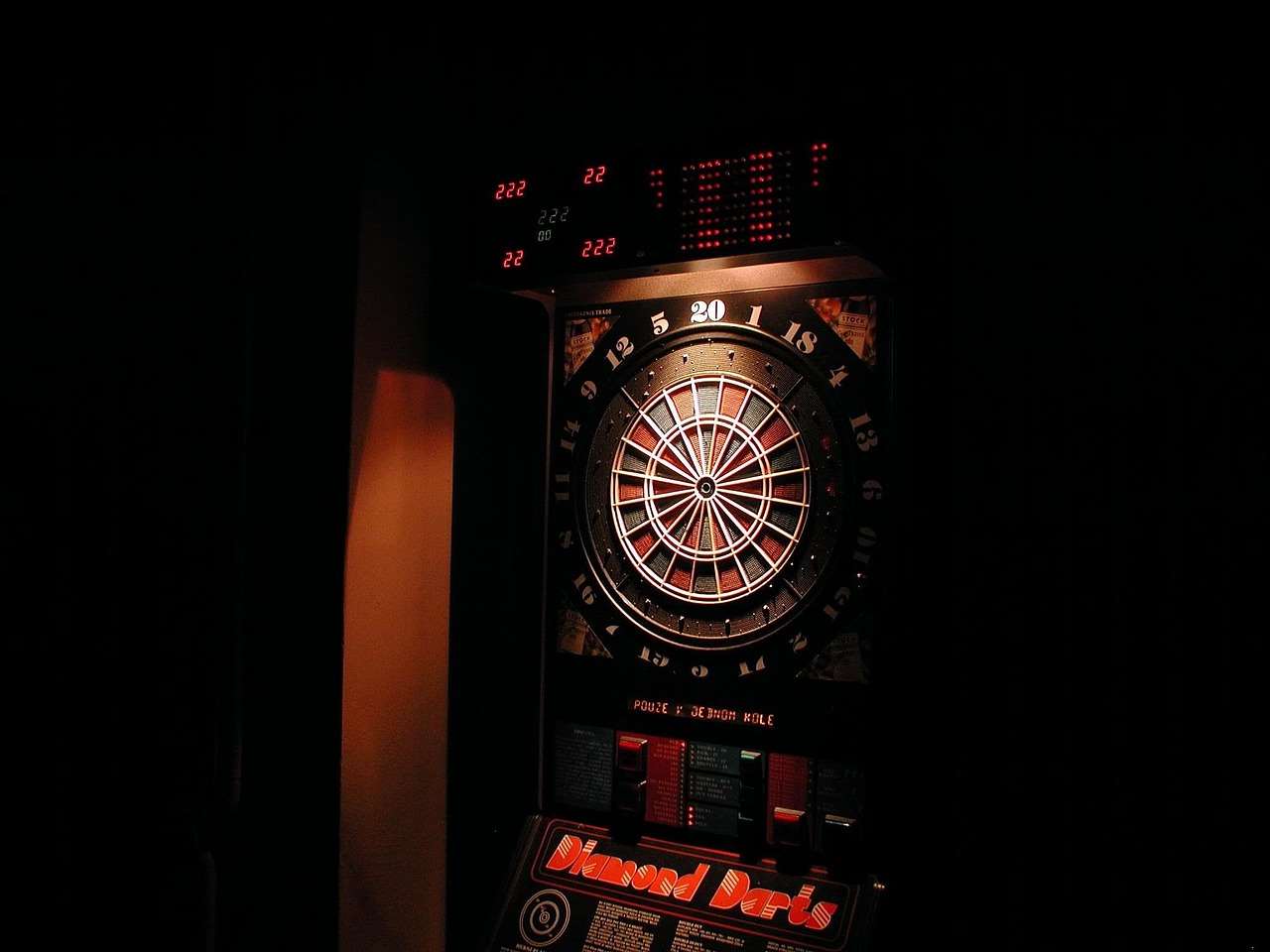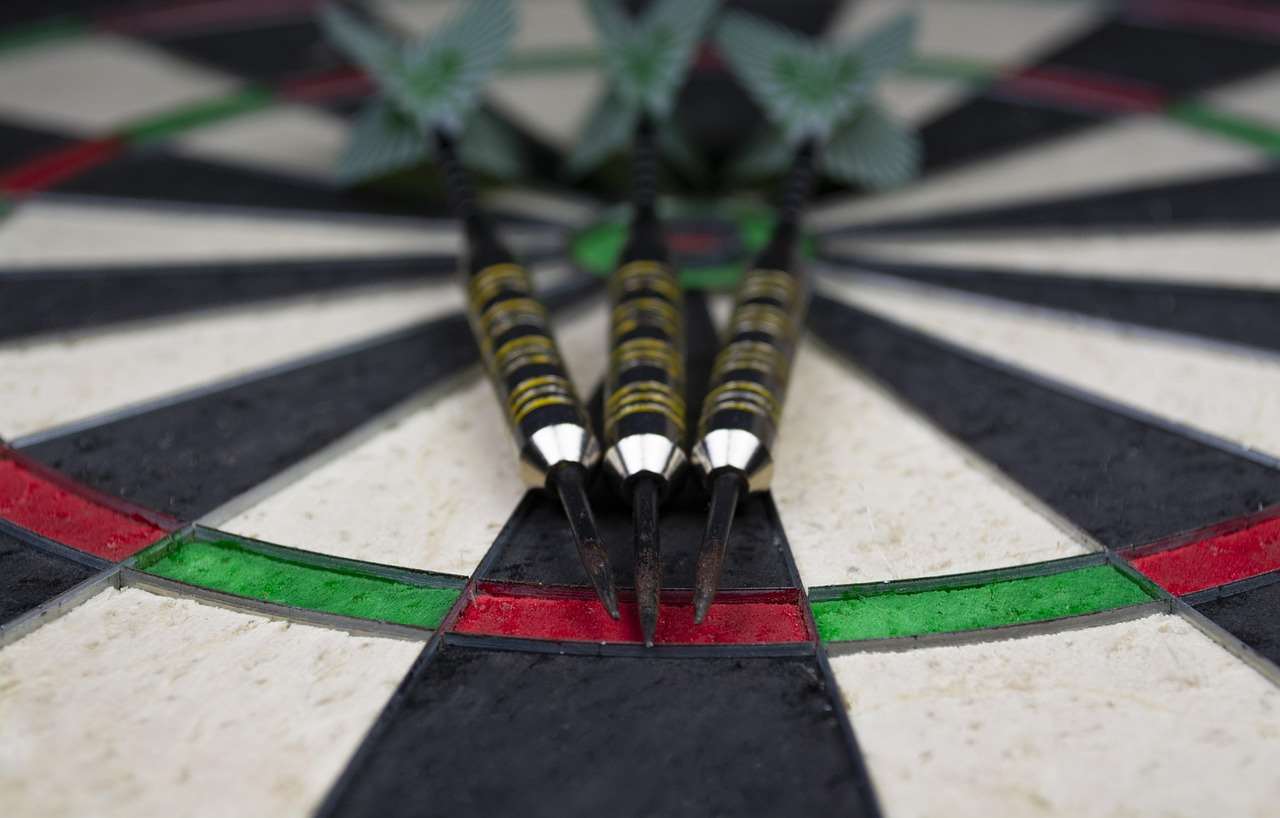Knowing when to switch targets in Cricket darts strategy is crucial for maximizing your score and capitalizing on your opponent’s weaknesses. The best time to change your focus is when you’ve marked all the high-scoring numbers and need to shut them down, or when your opponent is close to closing out a number you haven’t marked yet. This guide will explore the nuances of target switching, helping you develop a more strategic and adaptable approach to Cricket.
⚠️ Still Using Pen & Paper (Of een schoolbord)?! ⚠️
Stap in de toekomst! De Dart Teller -app behandelt alle scoren, stelt kassa voor, en volgt uw statistieken automatisch. It's easier than you think!
Probeer de Smart Dart Teller -app gratis!Klaar voor een upgrade? Klik hierboven!
Understanding the Core Principles of Target Selection
Before diving into the specifics of when to switch targets in Cricket darts strategy, it’s essential to grasp the underlying principles that govern your target selection process. In Cricket, you’re aiming to both score points and close out numbers to prevent your opponent from scoring on them. This creates a dynamic where your priorities can shift from turn to turn.
Hier zijn enkele belangrijke overwegingen:
- Your Current Score: Are you ahead or behind? If you’re significantly behind, you might prioritize scoring on open numbers. If you’re ahead, focus on closing out numbers to limit your opponent’s scoring potential.
- Your Opponent’s Open Numbers: Which numbers are they scoring on? Shutting down their preferred scoring targets can significantly hinder their progress.
- Numbers You’ve Marked: How close are you to closing out specific numbers? A number with two marks is a prime candidate for closing.
- Board Coverage: Do you have a good spread of marked numbers? A balanced board provides more options for scoring and defense.

Situational Awareness: Assessing the Board State
The decision of when to switch targets in Cricket darts strategy hinges heavily on your ability to accurately assess the current state of the board. This involves analyzing several factors, including your own score, your opponent’s score, and the status of each number on the board.
Consider these scenarios:
* **Scenario 1: You’re Behind and Your Opponent Has Multiple Open Numbers.** Your primary focus should be on scoring. Target numbers that are both open and likely to be hit consistently.
* **Scenario 2: You’re Ahead and Your Opponent Has Several Open Numbers You’ve Marked.** Now is the time to switch your focus to closing those numbers. Preventing your opponent from scoring is more valuable than increasing your lead. Consider reading about Basic Darts Fundamentals for Beginners.
* **Scenario 3: The Board Is Relatively Even, and No One Is Significantly Ahead.** A balanced approach is often best. Focus on both scoring and closing, prioritizing numbers where you have a tactical advantage.
* **Scenario 4: Your Opponent is Close to Closing a High Scoring Number:** You must defend by marking that number yourself to keep it open for yourself as well, or attempt to close it before they do.
Reading the board effectively requires practice and attention to detail. Pay close attention to which numbers are open, which are marked, and which are closed.
Specific Scenarios: When to Change Your Focus
Let’s explore some more specific situations and strategies for when to switch targets in Cricket darts strategy. These scenarios will give you a more practical understanding of how to apply the principles we’ve discussed.
Switching to Defense: Shutting Down Your Opponent
One of the most critical times to switch targets is when your opponent is consistently scoring on a particular number. If they’ve marked 20 and are hitting it regularly, you need to intervene. You have two options:
- Mark the Number Yourself: This prevents your opponent from closing it out and keeps it available for you to score on.
- Close the Number: If you have enough marks on the number, closing it will shut down your opponent’s scoring opportunity completely. This is particularly effective if you suspect they’re about to close it themselves.
Defensive target switching is a crucial aspect of Cricket strategy. Don’t be afraid to abandon your own scoring plans to protect your lead or prevent your opponent from gaining an advantage.
Capitalizing on Opportunities: Exploiting Weaknesses
Sometimes, the best time to switch targets is when an opportunity presents itself. Bijvoorbeeld, if your opponent accidentally leaves a high-scoring number open with only one mark, you can capitalize by quickly closing it. This not only scores you points but also deprives your opponent of a valuable scoring opportunity. Thinking about Alternative darts rules for home play can also adjust game strategy.
Opportunity-based target switching requires quick thinking and the ability to recognize and exploit weaknesses in your opponent’s game.

Closing Out Numbers: Securing Your Lead
As you progress through a game of Cricket, you’ll likely have several numbers with two marks. These are prime candidates for closing out. When to switch targets in Cricket darts strategy often comes down to prioritizing these almost-closed numbers, especially if you’re in the lead. Closing them prevents your opponent from scoring and brings you closer to victory.
Echter, consider the risk-reward. If closing a number requires you to abandon a high-scoring opportunity, weigh the potential benefits carefully. Sometimes, scoring more points is more advantageous than closing a number.
Switching to Lower Numbers: Playing it Safe
In certain situations, switching to lower numbers like 15, 16 of 17 can be a strategically sound move. This is especially true when you are far ahead and want to play defensively. Focusing on lower numbers makes it harder for your opponent to catch up quickly since they score fewer points per dart. This can be a good strategy for beginners, and you can read about Adapting darts rules for beginners for more.
Adapting to Different Opponents
The effectiveness of your target switching strategy will depend heavily on your opponent’s playing style. Understanding their tendencies and weaknesses is crucial for making informed decisions about when to switch targets in Cricket darts strategy.
Here are some common opponent types and how to adapt your strategy:
- The Consistent Scorer: This player is reliable at hitting their target numbers. Focus on closing out their preferred scoring numbers to limit their opportunities.
- The Erratic Player: This player is unpredictable and prone to mistakes. Capitalize on their missed throws by quickly closing numbers they leave open.
- The Defensive Player: This player prioritizes shutting down your scoring opportunities. Be prepared to adapt your strategy and find alternative scoring routes.
Adapting to your opponent’s style is a key element of successful Cricket play. Observe their tendencies, identify their weaknesses, and adjust your target switching strategy accordingly.

The Role of Confidence and Mental Game
Uiteindelijk, the decision of when to switch targets in Cricket darts strategy is a mental one. Confidence in your ability to hit your target numbers is crucial for making the right choices. If you’re feeling hesitant or uncertain, it can be difficult to execute your strategy effectively.
Verder, maintaining a positive attitude and staying focused under pressure is essential. Don’t let a few missed throws derail your game plan. Stay calm, assess the situation, and make informed decisions based on your overall strategy. You can find more info about Fun dart game variations with modified rules.
Practice Drills for Improving Target Switching
Improving your ability to switch targets effectively requires dedicated practice. Here are some drills you can use to hone your skills:
- Random Target Drill: Call out a series of random target numbers and practice switching between them quickly and accurately.
- Pressure Drill: Simulate game scenarios by setting specific objectives (Bijv., close out a number within three darts) and practicing under pressure.
- Opponent Simulation: Have a friend simulate your opponent’s throws and practice reacting to their moves by switching targets defensively.
Consistent practice is the key to developing your target switching skills and becoming a more strategic Cricket player.

Advanced Strategies for Target Selection
Once you’ve mastered the basic principles of target selection, you can start exploring more advanced strategies. These strategies involve a deeper understanding of game theory, waarschijnlijkheid, and opponent psychology.
Strategic Sacrifice: Giving Up Points to Gain an Advantage
Sometimes, it’s strategically advantageous to sacrifice a few points in the short term to gain a larger advantage in the long term. Bijvoorbeeld, you might choose to defend a number that your opponent is scoring on, even if it means forgoing an opportunity to score more points yourself. This can disrupt their rhythm, limit their scoring potential, and ultimately give you a better chance of winning.
Mind Games: Psychologically Influencing Your Opponent
Cricket is not just a game of skill; it’s also a game of mind. You can use your target selection to psychologically influence your opponent. Bijvoorbeeld, you might intentionally target a number that you know they’re weak at, or you might switch targets unexpectedly to throw them off their game. These psychological tactics can give you a competitive edge.

Utilizing Statistics: Analyzing Your Performance Data
Keeping track of your performance can provide valuable insights into your strengths and weaknesses. By analyzing data such as your average score per dart, your accuracy on different numbers, and your success rate at closing out numbers, you can identify areas where you need to improve and refine your target selection strategy. There is always space to focus on How to make darts fairer with handicap rules.
Conclusie
Mastering when to switch targets in Cricket darts strategy is a continuous learning process that requires practice, analysis, and adaptation. By understanding the core principles of target selection, assessing the board state, adapting to different opponents, and honing your mental game, you can develop a more strategic and adaptable approach to Cricket. Remember to practice consistently, analyze your performance, and never be afraid to experiment with new strategies. Embrace these insights to elevate your gameplay and dominate the Cricket board! Take your newfound knowledge and put it into practice, and you’ll be closing out games like a pro in no time!
Hoi, Ik ben Dieter, En ik heb Dartcounter gemaakt (Dartcounterapp.com). Mijn motivatie was geen darts -expert - helemaal tegenovergestelde! Toen ik voor het eerst begon te spelen, Ik hield van het spel, maar vond het moeilijk en afleidend om nauwkeurige scores te houden en statistieken te volgen.
Ik dacht dat ik niet de enige kon zijn die hiermee worstelde. Dus, Ik besloot om een oplossing te bouwen: een eenvoudig te gebruiken applicatie die iedereen, Ongeacht hun ervaringsniveau, zou kunnen gebruiken om moeiteloos te scoren.
Mijn doel voor Dartcounter was eenvoudig: Laat de app de nummers afhandelen - het scoren, de gemiddelden, de statistieken, Zelfs checkout suggesties - zodat spelers puur kunnen richten op hun worp en genieten van het spel. Het begon als een manier om het probleem van mijn eigen beginners op te lossen, En ik ben heel blij dat het is uitgegroeid tot een nuttig hulpmiddel voor de bredere darts -community.